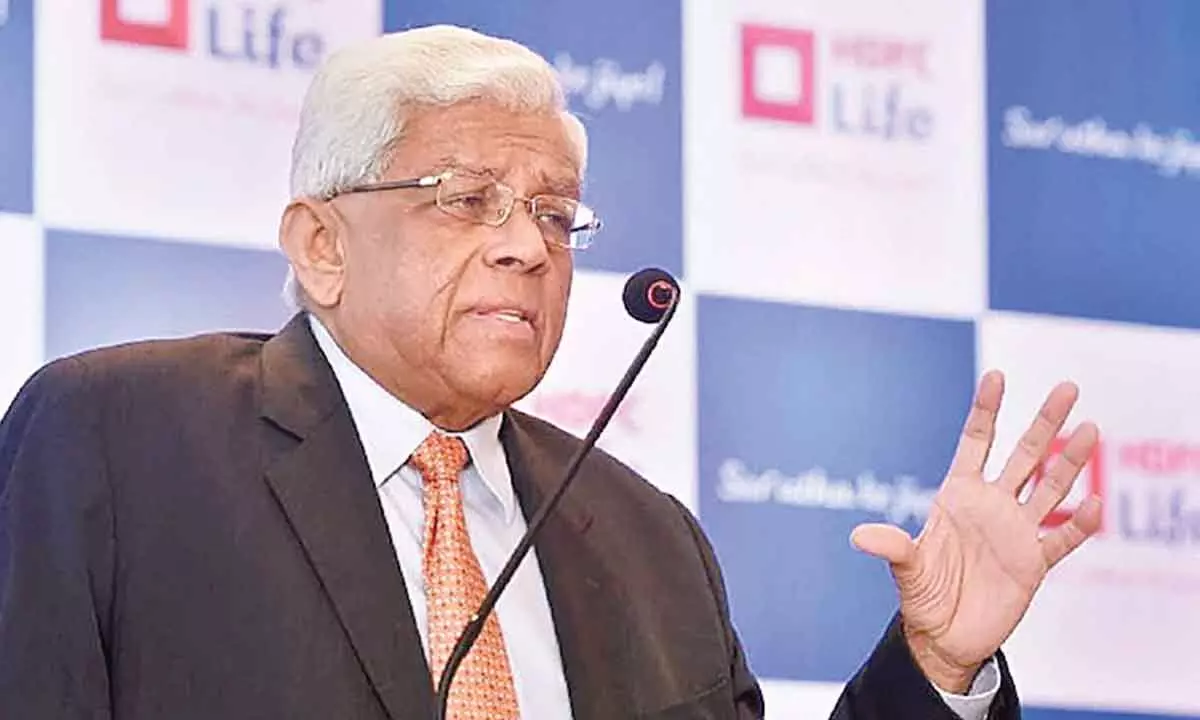India witnessing early signs of sustainable revival: HDFC chief
Says high growth in non-oil & non-gold imports reflects a pickup in domestic demand
image for illustrative purpose

Mumbai: Deepak Parekh, chairman, HDFC, sees a healthy GDP growth for India in the days to come and he cites several factors for the same.
"GDP of India showed a healthy growth of 8.7 per cent in the year 2021-22. The Government balanced the fiscal policy well. It ensured care for the needy, supported a massive vaccination program and yet pushed large scale capex in infrastructure. Monetary policy was also very adroitly balanced, and these ensured that there was no excessive money supply in the system that could stoke runaway inflation," Parekh said, while addressing the 28th AGM of HDFC.
"Since a large part of the GDP consists of domestic consumption, I see a healthy growth path during the year. It is predicated on the factors like low level of corporate taxation and a stabilized GST system that is now showing results in the form of higher tax revenues and large amount of spending on infrastructure projects through PM's Gati Shakti program," he said.
According to Parekh, PLI scheme is already showing results and manufacturing would further get a fillip on account of this as well on account of rebound in domestic consumption. This will also bring a larger chunk of global supply chain into the country and create a new and diverse set of demand drivers. Services sector is rebounding sharply with IT sector on a sharp growth curve. We see recovery in trade, travel and hospitality.
Furthermore, with both the RBI and Government undertaking measures to combat inflationary pressures, retail inflation is also likely to moderate in the months ahead, providing further support to consumer demand. The medium-term outlook of the economy remains optimistic and macro-economic fundamentals are still strong, putting India in a better position to weather any major global shocks.
"Therefore, I am not surprised at a projection of growth around 7.3 per cent in 2022-23, in spite of global headwinds," Parekh said.
HDFC chairman said India is now witnessing early signs of a sustainable economic revival.
"High growth in non-oil & non-gold imports reflects a pickup in domestic demand. Domestic economic activity is fuelled by private consumption and rising discretionary spending. Furthermore, the forecast for a normal southwest monsoon this year is expected to support rural consumption," he said.
Parekh, however, cautioned that, "We need to be vigilant of the implications from the current geopolitical tensions, elevated commodity prices, slowing external demand, supply disruptions, capital outflows, higher inflation in emerging economies and the withdrawal of monetary accommodation in developed economies."
He called for life insurance companies to be allowed to sell health indemnity policies. Currently, only non-life companies can sell health indemnity policies, which include the cashless medi-claim covers sold by general and health insurers. The regulator is currently deciding on allowing life companies more leeway in the health sector with the objective of increasing penetration in the wake of the pandemic.
"We have requested the authority to accept the recommendations in the health indemnity committee report, allowing life insurers to distribute health indemnity plans. Another suggestion is to move to a risk-based capital framework that would help improve capital efficiency and facilitate better risk management for insurance companies," said Parekh. He added that the authority has already made a significant relaxation in the form of allowing 'use & file' for select products.
"This kind of enablement for the industry is expected to support the growth agenda even more firmly going forward," he said.
Indemnity health insurance has been the domain of non-life companies globally as well. However, many countries allow for composite licences. Allowing life companies to sell indemnity products would increase competition in what has become the largest non-life business category. Pre-pandemic, motor insurance used to dominate general insurance business.
"Despite the pandemic, the Indian life insurance industry's new business premium grew by 16 per cent in FY22. At HDFC Life, we achieved another strong year of business performance, maintaining our new business market share of 21 per cent and 7.7 per cent in private and overall life insurance market, respectively," said Parekh.
During the year, HDFC Life paid protection claims worth Rs 5,804 crore as against Rs 1,037 crore in FY21 due to the pandemic. "Despite this significant increase, our commitment to protect our policyholders remained steadfast and we settled 99.6 per cent overall and 98.7 per cent individual death claims," said Parekh.

